


Celiac Disease, Gluten Sensitivity, And Wheat Allergies

Gluten-related disorders have emerged as a significant health concern over the past few years, garnering attention in the fields of nutrition, health, and culinary arts. These conditions primarily affect individuals who experience adverse reactions to gluten, a protein found in wheat, barley, rye, and their derivatives. This article delves into the various gluten-related disorders, shedding light on celiac disease, gluten sensitivity, and wheat allergies.
Celiac Disease
Celiac disease, often described as the most severe form of gluten-related disorder, is an autoimmune disorder that affects around 1% of the global population. In individuals with celiac disease, the immune system mistakenly targets and damages the lining of the small intestine in response to the ingestion of gluten. This can result in a range of debilitating symptoms and long-term health consequences if left untreated.
Common symptoms of celiac disease include gastrointestinal issues like diarrhea, bloating, and abdominal pain, as well as fatigue, anemia, and skin rashes. However, it's important to note that some individuals with celiac disease may experience no noticeable symptoms, making diagnosis challenging. Long-term complications can include malnutrition, osteoporosis, and an increased risk of other autoimmune diseases.
Gluten Sensitivity
While celiac disease is a well-defined medical condition, gluten sensitivity, or non-celiac gluten sensitivity (NCGS), is a less clearly understood phenomenon. People with gluten sensitivity experience symptoms similar to those of celiac disease, such as abdominal discomfort, fatigue, and headaches, but do not test positive for celiac disease or wheat allergy. It is often referred to as a "diagnosis of exclusion."
The precise cause of gluten sensitivity remains unclear, but it is thought to be a distinct condition from celiac disease and wheat allergy. Many individuals with NCGS report feeling better on a gluten-free diet, although the mechanism behind these symptoms remains a topic of ongoing research and debate.
Wheat Allergies
Wheat allergies, like other food allergies, are characterized by an immune response to specific proteins found in wheat. This response can trigger a range of allergic symptoms, from hives and difficulty breathing to gastrointestinal distress. Unlike celiac disease and gluten sensitivity, wheat allergies are well-defined and diagnosed through allergy testing.
Wheat allergies primarily affect children and often resolve as they grow older. In some cases, individuals with wheat allergies may be able to tolerate wheat in processed forms or after outgrowing the allergy.
Gluten-Free Lifestyle
Understanding the differences between these gluten-related disorders is crucial for those who are affected and for individuals who are considering adopting a gluten-free lifestyle. For people with celiac disease, strict adherence to a gluten-free diet is the only effective treatment. Those with gluten sensitivity may find symptom relief on a gluten-free diet, but it is essential to consult a healthcare professional for an accurate diagnosis. Wheat allergy management involves avoiding wheat-containing foods and, in some cases, carrying an epinephrine auto-injector in case of severe reactions.
Gluten-related disorders, including celiac disease, gluten sensitivity, and wheat allergies, represent a complex and diverse spectrum of conditions. Proper diagnosis and management are key to ensuring the well-being of affected individuals. For those without gluten-related disorders, the decision to go gluten-free should be made carefully, considering the potential nutritional implications of excluding gluten-containing grains from the diet. As research continues to advance, our understanding of these disorders will become more nuanced, potentially leading to improved diagnostic tools and treatments for those affected by gluten-related issues.
Culinary Treasures That Bind Generations
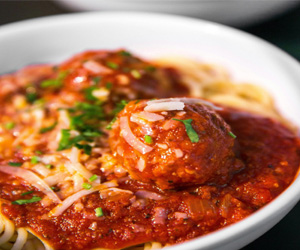
At the heart of beloved recipes lies the concept of familiarity and nostalgia. These are the dishes that have been prepared for generations, and their flavors hold a special place in the hearts of those who have savored them. From grandma's secret apple pie to the famous spaghetti sauce that's a closely guarded family tradition, these recipes bring a sense of comfort and warmth with every bite.
Beloved recipes often represent more than just culinary expertise; they are a reflection of cultural heritage. Passed down from ancestors who immigrated to new lands, these recipes carry with them the essence of a culture, preserving traditions, flavors, and culinary techniques that have been cherished for centuries. Whether it's the rich spices of Indian curry, the simplicity of Italian pasta, or the heartiness of Southern barbecue, beloved recipes offer a window into the world's diverse and vibrant cuisines.
Savoring The Culinary Magic
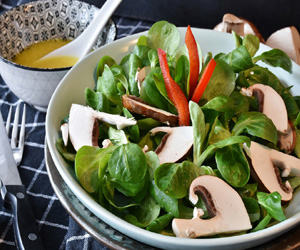 A Culinary Journey: Delightful dinners often take you on a culinary journey. They can transport you to different parts of the world, allowing you to savor the flavors of exotic cuisines. This culinary exploration is not limited to professional chefs; anyone with a passion for cooking can embark on this adventure. With the right ingredients, recipes, and a dash of curiosity, you can bring the world to your dinner table.
A Culinary Journey: Delightful dinners often take you on a culinary journey. They can transport you to different parts of the world, allowing you to savor the flavors of exotic cuisines. This culinary exploration is not limited to professional chefs; anyone with a passion for cooking can embark on this adventure. With the right ingredients, recipes, and a dash of curiosity, you can bring the world to your dinner table.
The Joy Of Sharing: Delightful dinners are not just about the food but also the company you share them with. Whether it's with family, friends, or that special someone, the act of sharing a meal fosters connection and strengthens bonds. It's a time to catch up, laugh, and create lasting memories.
The Crucial Alchemy Behind Perfect Coffee
 The Roasting Machine
The Roasting Machine
Roasting coffee demands specialized equipment known as a coffee roaster. These machines come in various sizes and configurations, from small batch roasters for artisanal micro-roasters to large industrial roasters for mass production. These roasters are equipped with advanced controls to monitor temperature, airflow, and other variables.
The Roasting Process
Drying Phase: The roasting process begins with the drying phase. In this initial stage, the green coffee beans lose moisture and begin to change color from green to yellow. The beans become more brittle, and a grassy smell is often noted.
First Crack: As the roasting temperature continues to rise, the beans undergo a significant change known as the first crack. This is the point at which the beans audibly crack, similar to popcorn. The sugars in the beans begin to caramelize, leading to the development of flavors and the release of carbon dioxide.
A Culinary Journey Of Health And Flavor
 Fresh, Seasonal Ingredients: At the heart of Mediterranean cuisine is an unwavering commitment to using fresh, seasonal ingredients. Luscious tomatoes, vibrant bell peppers, succulent olives, aromatic herbs, and a bounty of fruits and vegetables are staples. The emphasis on seasonality not only ensures the freshest, most flavorful ingredients but also connects individuals to their environment and allows them to savor the unique tastes that each time of year brings.
Fresh, Seasonal Ingredients: At the heart of Mediterranean cuisine is an unwavering commitment to using fresh, seasonal ingredients. Luscious tomatoes, vibrant bell peppers, succulent olives, aromatic herbs, and a bounty of fruits and vegetables are staples. The emphasis on seasonality not only ensures the freshest, most flavorful ingredients but also connects individuals to their environment and allows them to savor the unique tastes that each time of year brings.
Olive Oil, The Liquid Gold: Olive oil is the cornerstone of Mediterranean cooking. It's not only used for its health benefits but is the primary source of fat in this diet. Rich in monounsaturated fats and antioxidants, olive oil is a vital ingredient in Mediterranean recipes, contributing to the cuisine's heart-healthy reputation.
Lean Proteins: Mediterranean cuisine values lean protein sources. Fresh seafood, including fish like salmon, sardines, and mackerel, is a regular feature. Legumes like chickpeas and lentils, as well as poultry, are also commonly consumed. Red meat is enjoyed in moderation, typically on special occasions.

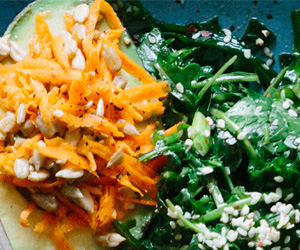




Nourishing Your Mind, Body, And Soul
 The Wholesome Pantry is a brand that has wholeheartedly embraced the philosophy of wholesome living. Their mission is to provide individuals with access to products that not only taste delicious but also support a healthier lifestyle. They understand that nourishing your body begins with the food you consume but doesn't end there.
The Wholesome Pantry is a brand that has wholeheartedly embraced the philosophy of wholesome living. Their mission is to provide individuals with access to products that not only taste delicious but also support a healthier lifestyle. They understand that nourishing your body begins with the food you consume but doesn't end there.
Eating For Wholesome Living: At the core of wholesome living is the food we consume. Choosing natural, unprocessed, and nutrient-rich foods is essential. Wholesome living emphasizes fresh produce, locally sourced ingredients, and sustainable agricultural practices. The Wholesome Pantry exemplifies this by offering a range of products that are not only delicious but also made from clean, quality ingredients. By selecting foods without additives, preservatives, and artificial flavors, you're supporting your health and well-being.
Mindful Eating: Wholesome living encourages mindful eating. It's about being present at meal times, savoring every bite, and paying attention to your body's hunger and fullness cues.
Mastering Efficiency In The Kitchen
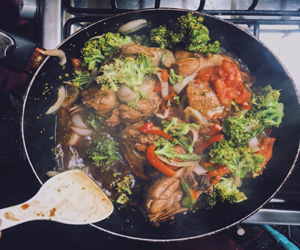 Benefits Of Quick Cooking
Benefits Of Quick Cooking
Here are some compelling reasons to embrace quick cooking:
1. Time Efficiency: The most obvious benefit is that quick cooking saves time. You can have a meal on the table in minutes, making it ideal for busy weeknights or when unexpected guests drop by.
2. Reduced Stress: Traditional cooking can be stressful, especially when time is limited. Quick cooking techniques minimize stress by simplifying the process and eliminating the need for elaborate preparations.
3. Fresh And Healthy: Quick cooking doesn't mean compromising on freshness and nutrition. With the right ingredients and techniques, you can create healthy and flavorful meals without spending hours in the kitchen.
4. Versatility: Quick cooking isn't limited to specific types of dishes. You can apply these techniques to a wide range of cuisines and recipes, from stir-fries and sheet pan dinners to simple salads and pasta dishes.
A Recipe For Health And Sustainability
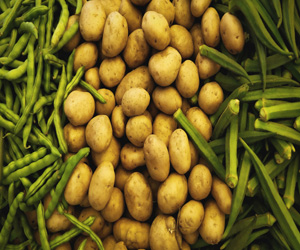 Health Benefits: Organic cooking prioritizes the quality and nutritional value of ingredients. Here are some key health benefits associated with organic cooking:
Health Benefits: Organic cooking prioritizes the quality and nutritional value of ingredients. Here are some key health benefits associated with organic cooking:
Nutrient-Rich Ingredients: Organically grown foods tend to be richer in essential nutrients, such as vitamins, minerals, and antioxidants. This means that meals prepared with organic ingredients can provide a more substantial nutritional punch.
Avoiding Harmful Chemicals: Organic cooking eliminates the risk of ingesting synthetic pesticides and herbicides commonly found on conventionally grown produce. These chemicals have been linked to various health issues, making organic options a healthier choice.
Reduced Exposure To Antibiotics And Hormones: Organic meats and dairy products come from animals that are raised without antibiotics and synthetic hormones. By consuming organic animal products, you reduce your exposure to these potentially harmful substances.